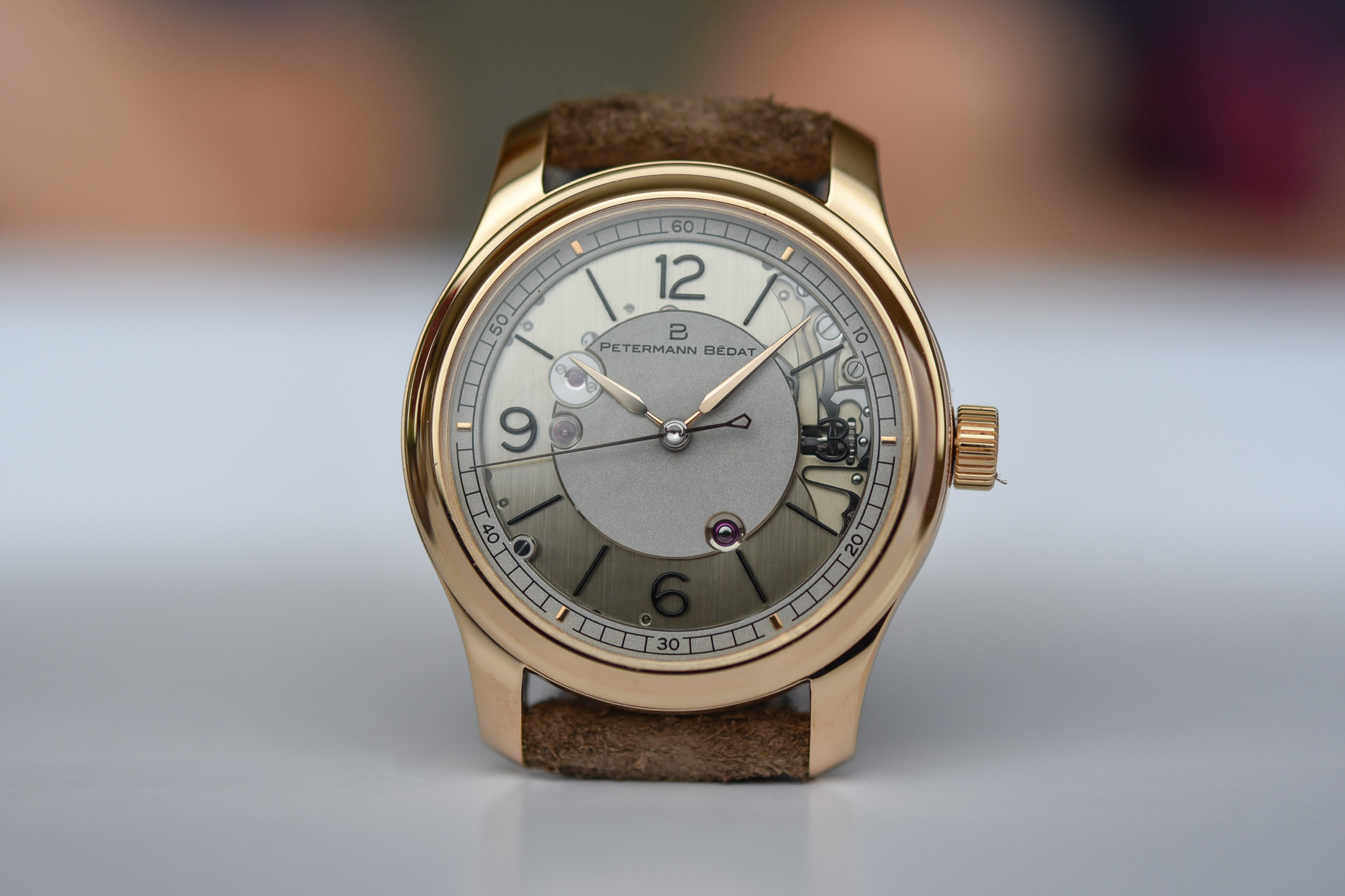Petermann Bédat 1967 Deadbeat Seconds
Taking a look at an updated and finalized version of the Petermann Bédat deadbeat seconds watch

If you are a regular reader of MONOCHROME, you probably know Petermann Bédat. This independent brand was founded by a duo of young talented watchmakers, two friends who established their workshop in Renens (near Lausanne, Switzerland) to perform restoration work and who ended up creating their own project. We already discovered their first watch, which according to them, was as an intermediary step to a new chapter. Indeed, several elements of the habillage were in the process of being redesigned. It is now time to take a look at the evolution of the model… and share pictures of the updated Petermann Bédat 1967 Deadbeat Seconds.
The Petermann Bédat 1967 is a beautifully crafted 3-hander that owes its name to the unusual motion of its seconds hand. 1967 was the year when the first quartz wristwatch was presented. Naturally, the Petermann Bédat 1967 is 100% quartz-free but, unlike traditional mechanical watches for which the seconds hand sweeps in increments of a second, it marks the second with discrete jumps. Just like a quartz watch, but mechanical. This precise one-second beat allows reading the time more accurately.
This rare way to display the time for a mechanical watch is driven by a beautiful hand-wound movement, fully handcrafted by Gael Petermann and Florian Bédat. The Calibre 171 was designed in collaboration with Dominique Renaud, their neighbour in Renens. Its deadbeat seconds mechanism was inspired by that of a pocket watch with tourbillon and seconde morte by Robert Gafner.
The large, beautiful balance wheel operates at 18,000 vibrations per hour and its rate can be adjusted by a swan-neck regulator. With its large untreated German silver three-quarter plate and original dead-beat second, the movement is magnificent. It features various finishes including rare traditional techniques. For instance, the deep matte finish of the deadbeat seconds bridge is achieved with poudre du Levant mixed with olive oil.
This beautiful movement is now at the heart of an updated design created with the support of Bart Nussbaumer. If the first watch we’ve seen was rather classic in its execution (mainly due to its simple dial), this new chapter stands out with a more asserted personality. For Gael Petermann and Florian Bédat, it is an important step to set the tone for the design language of their brand.
Its most striking expression is the partially transparent dial. Manufactured with Kari Voutilainen’s Comblémine, it consists of two steel plates that are sandblasted by hand and fitted onto a sapphire disc. It reveals various parts of the movement, in particular, the keyless works or some jewels and their sinks. On the periphery of the dial, the simple chapter ring is punctuated with small rectangular hour markers. The hours and minutes are indicated by elegant lance-shaped hands, which are handcrafted out of gold or flame-blued steel.
The 39mm case remains the same as before and is available in pink or white gold, each being a limited edition of 10 pieces. The Petermann Bédat 1967 Deadbeat Seconds is worn on an Alcantara leather strap with a gold pin buckle. Price is set at CHF 59,800.
For more information, please visit www.petermann-bedat.ch or contact [email protected] for direct orders.

















5 responses
A real beauty: thanks Mr. Xavier Markl for presenting such a wonderful object!
I believe that artisans (in the highest possible connotation) like Petermann and Bédat represent what will always keep the interest for rmechanical watches alive… at least mine.
And at the end, I do not even regret not having the means for buying one! Reading the articles and looking at the pictures is enough!!
Absolutely gorgeous. Very desirable.
Thanks for reading us Enrico!
Not an in house movement! Based on the valjoux 90/78
Its a dog with different fleas.(for the $)